
Load Cells for your scales are in stock and ready to ship. According to 1800scales.com, there are a wide range of in stock load cells for your weighing needs from top brands like Artech, Rice Lake, Cardinal, Vishay Sensortronics, Celtron, HBM, Revere Transducers, Transcell Technology, & Tedea Huntleigh. We ship these strain gauge load cells out everyday from our warehouses across the country to get you back up and weighing. If you need a loadcell quickly, give us a try. We also offer many interchangeable load cells in case you're having a hard time finding a particular make or model number directly proportional.
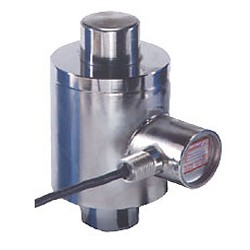 Canister Load Cells
Canister Load CellsCompression load cells a lot of times have an integral button design. Compression loadcells are ideal for mounting where space is restricted. Canister cells are commonly used for single and multi-weighing applications
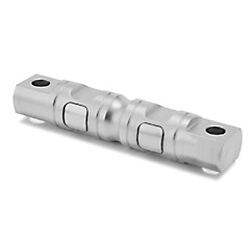 Double End Beam Load Cells
Double End Beam Load CellsBending Beam or Double End Beam load cells are used in tank weighing, truck scales or industrial process control. Bending Beam feature low profile construction for integration. Single or double end beam available.
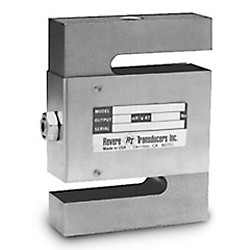 S-Beam Load Cells
S-Beam Load CellsS-Beam load cells get their name from their "s" shape. S-Beam provide an output under tension pull. Applications for S-Beams include hanging, tank level, hoppers and truck scales. Available in alloy steel or stainless steel versions.
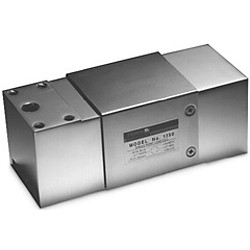 Single Point Load Cells
Single Point Load CellsSingle point load cells are commonly used in commercial and industrial weighing systems along with small to mid size bench platforms. These are often constructed out of aluminum. Popular choices include the Tedea Huntleigh 1042 and the Rice Lake RL1250.
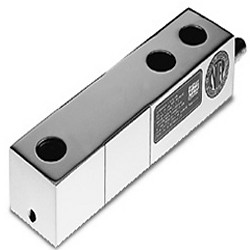 Single End Beam Load Cells
Single End Beam Load CellsBending Beam load cells also known as single end beam or shear beam load cells are often used in floor scales. Bending Beam feature low profile construction for integration. Single or double end beam available. Constructed in either alloy steel or stainless steel versions.
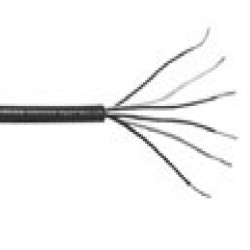 Load Cell Cable
Load Cell CableWe offer several different types of load cell cable. Most popular is the hostile environment version with either 4 wires or 6 wires. We also offer several other varieties of home run cables as well for popular weight indicators.
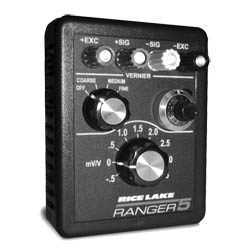 Load Cells Simulators
Load Cells SimulatorsLoad Cell Simulators are a must have tool for the troubleshooting and calibration of electronic weight indicators. These devices simulate the signal of a load cell under a range of load conditions. Designed for use in the field or indoors. Great tool for troubleshooting indicators.
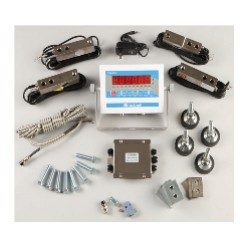 Scale Kits
Scale KitsThese build your own scale kits are great for designing a custom weighing system or perhaps saving a few bucks. The weighing equipment is all high quality and can often be used to create things like floor scales or platform scales.
Whether you’re looking for a load cell for a unique force applied application or have one that needs to be replaced, there is a likely a choice to meet your requirements. We can help you select the best load cell for your application, from tank and hopper weighing to bulk material weighing and everything else.
Aluminum load cells are used primarily in single-point, low-capacity applications. When compared to alloy steel cells of comparable capacities, aluminum load cells have relatively thick web sections. This is necessary to provide the proper amount of deflection in the element at capacity. Machining costs are usually lower on aluminum elements.
Load cells manufactured from alloy steel elements are some of the most popular cells used today. The value is better for alloy steel elements compared to either aluminum or stainless steel designs. This type of steel can be consistently manufactured to specifications, which means that minor load cell design changes don’t have to be made every time a new lot or steel vendor is selected.
Stainless steel load cells are made from the best overall performance qualities that allow for cell to perform at peak levels. They can be fitted with hermetically sealed web cavities, making them an ideal choice for corrosive, high-moisture applications. This is the best material to use in any application that requires extra protection because of the metal’s environmental resistance properties.
How does your existing load cell look? If it is covered with rust, corroded or badly oxidized on its exterior, corrosion has likely worked its way into the strain gauge area. If the general and physical condition has a good appearance, then you likely need to look at specifics: sealing areas, the element itself and the cable. In most load cells, areas of the load cell are sealed to protect the internal components from contamination by water and chemicals. To see if any seals have been degraded, look closely at the strain gauge seals.
As you know from the ohm's law relationship between voltage current and resistance, the usual value for a 1% shift in zero balance is 0.3 millivolt, assuming 10 volts excitation on a three millivolt per volt output load cell. To determine your application’s zero shift, multiply the excitation volts supplied by your indicator by the millivolt per volt rating of your load cell. When performing your field test, remember that load cells can shift up to 10% of full scale output and still function correctly. If your test strain gauges display a shift under 10%, you may have another problem with your suspect cell, meaning further testing is required. If the test cell displays a shift greater than 10%, it is likely it has been physically distorted and should be replaced.
However, even if the overall output resistance test is within normal specifications, you may still have a damaged load cell. Often when a load cell is damaged by overload or shock load, opposite pairs of resistors will be deformed by the applied force equally, but in opposite directions. The only way to determine this is to test each individual leg of the bridge. The Wheatstone Bridge diagram illustrates a load cell resistance bridge and shows the test procedure and results of a sample cell damaged in such a manner.
Regarding electrical resistance, if a load cell is still not performing to specifications, check for electrical leakage or shorts. Leakage is nearly always caused by water contamination within the load cell or cable, or by a damaged or cut cable. Electrical shorting caused by water is usually first detected by an indicator readout that is always unstable, as if the scale were constantly "in motion." This commonly occurs when cheaper environmentally protected load cells designed for normal non-washdown environments are used instead of the more expensive hermetically sealed load cells which could have stood up better to washdown applications.
To deter electrical leakage problems, test resistance to ground with a low-voltage megohmmeter. Use caution—a high-voltage meter that puts more than 50 volts of direct current into the cell may damage the strain gauges. If the shield is tied to the case, twist all four leads together and test between them and the load cell metal body. If the shield is not tied to the case, twist all four leads together with the shield wire and test between them and the body. If the result is not over 5,000 megohms, current is leaking to the body somewhere.
When your load cell(s) are connected the summing card, signal trimming is the most common type of trimming because it is the easiest to use. Compatible with virtually all indicators and relatively immune to temperature and vibration problems, signal trimming is gaining popularity for all installations. It involves adding a relatively high parallel resistance between the signal leads of each load cell. The added parallel resistance creates a "leakage path" that shunts some of the available load cell signal away from the indicator.
